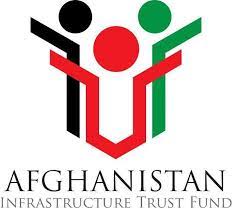At a meeting in Kabul in early 2021, a group dedicated to supporting Afghanistan’s infrastructure outlined its progress and plans for the future. The steering committee of the Afghanistan Infrastructure Trust Fund (AITF) met virtually in May for its annual meeting, which was attended by ambassadors, Afghan government officials, and representatives from key organizations and donor nations. The committee oversees the AITF and provides policy guidance.

The Asian Development Bank administers the fund, which was established in late 2010 to enable development partners to contribute to backing infrastructure that will improve the lives of the people of Afghanistan and support the development needs in the country. AITF supports work that is part of the Afghan government’s development priorities, which include the Self-Reliance Agenda and the National Infrastructure Plan. The work required on Afghanistan’s infrastructure is estimated to cost billions of dollars, much more than the country’s government alone can provide, and partnerships such as this one are vital to Afghanistan’s future.
“We are thankful to ADB and development partners for supporting AITF,” said Abdul Habib Zadran, ADB alternate governor, at the virtual meeting. “Infrastructure development is crucial for Afghanistan to achieve the goal of self-reliance. “[Since 2010], ADB and AITF development partners have invested in highly needed infrastructure projects, which helped people and businesses with access to markets and electricity, created jobs, and reduced poverty.”
At the committee meeting, Narendra Singru, ADB country director, presented an overview of how the AITF is impacting Afghanistan, including efforts to monitor the country’s security issues and its work with partners to offer support. The committee also talked about its future priorities and how it would guide AITF’s strategy and progress, and members of the committee recommitted to their partnership with the fund to support Afghanistan’s development.
AITF Projects and Accomplishments
The AITF has provided grants to support work to strengthen Afghanistan’s infrastructure and financing technical assistance for the water and energy sectors since 2013. Here is a look at some of the infrastructure work that AITF has completed with the help of funding from its partners and some other projects where it is making progress.
- Worked with USAID, which provided $800,000 in funding, to prepare a Gas Development Master Plan for Afghanistan to be implemented through 2035. The plan was completed in April 2016 and outlines a strategy for sustainable development for Afghanistan’s natural gas resources, protecting the nation’s environment, and securing its national energy supply.
- Due to $600,000 in funding from USAID, the Arghandab Feasibility Study was conducted between 2017 and 2019 to come up with a design for a multi-use dam project that will provide irrigation and agricultural development, improve Kandahar City’s water supply, spur hydroelectric power development, and raise Dahla Dam. In 2018, the ADB and World Bank signed a memorandum of understanding with the Afghan government to provide the $400 million needed to rebuild the dam and enhance other projects related to the water supply in Kandahar.
- From 2014 to 2021, USAID has provided nearly half of the $216 million needed for the North-South Power Transmission Enhancement project, which will connect about 1 million people to electricity in the rural and urban areas of Afghanistan. The transmission lines and substations will handle power both produced in the country and imported from nations to the north. By the end of 2018, the project was more than 50% complete.
- The Kabul Managed Aquifer Recharge project, which was conducted between 2015 and 2020, was created to find a solution to the decreasing domestic water supply in Kabul City. USAD provided funding to ADB to test-manage aquifer recharge and recovery and storage technologies. The projected four managed aquifer recharge sites were funded with $7 million from USAID.
- With $40 million from USAID, the Energy Supply Investment Program constructed a transmission line and substation between Doshi and Bamyan to provide affordable electricity to Bamyan and other central Afghanistan provinces. The project was about 13% complete at the end of 2018.
More About the AITF
The AITF’s priorities focus on significant areas of need, including irrigations systems, transportation connections, energy facilities and security, mineral resources development, and private sector development.
The fund is supported by Japan, Germany, the NATO ANA Trust Fund, and the United States Agency for International Development. Other key partners include the Afghanistan National Army Trust Fund, the government of Canada, and the United Kingdom Foreign, Commonwealth, and Development Office.
In addition to these partners, ADB and Afghanistan’s Ministry of Finance are working to secure additional funds from private entities and other potential partners. Projects that support the country’s most pressing infrastructure needs and development plans are eligible for funding.
AITF’s partners have committed more than $750 million toward infrastructure development, and more than $570 million has been assigned to projects. The AITF continues to seek support as it works to become a “flagship vehicle” in improving infrastructure in Afghanistan.

